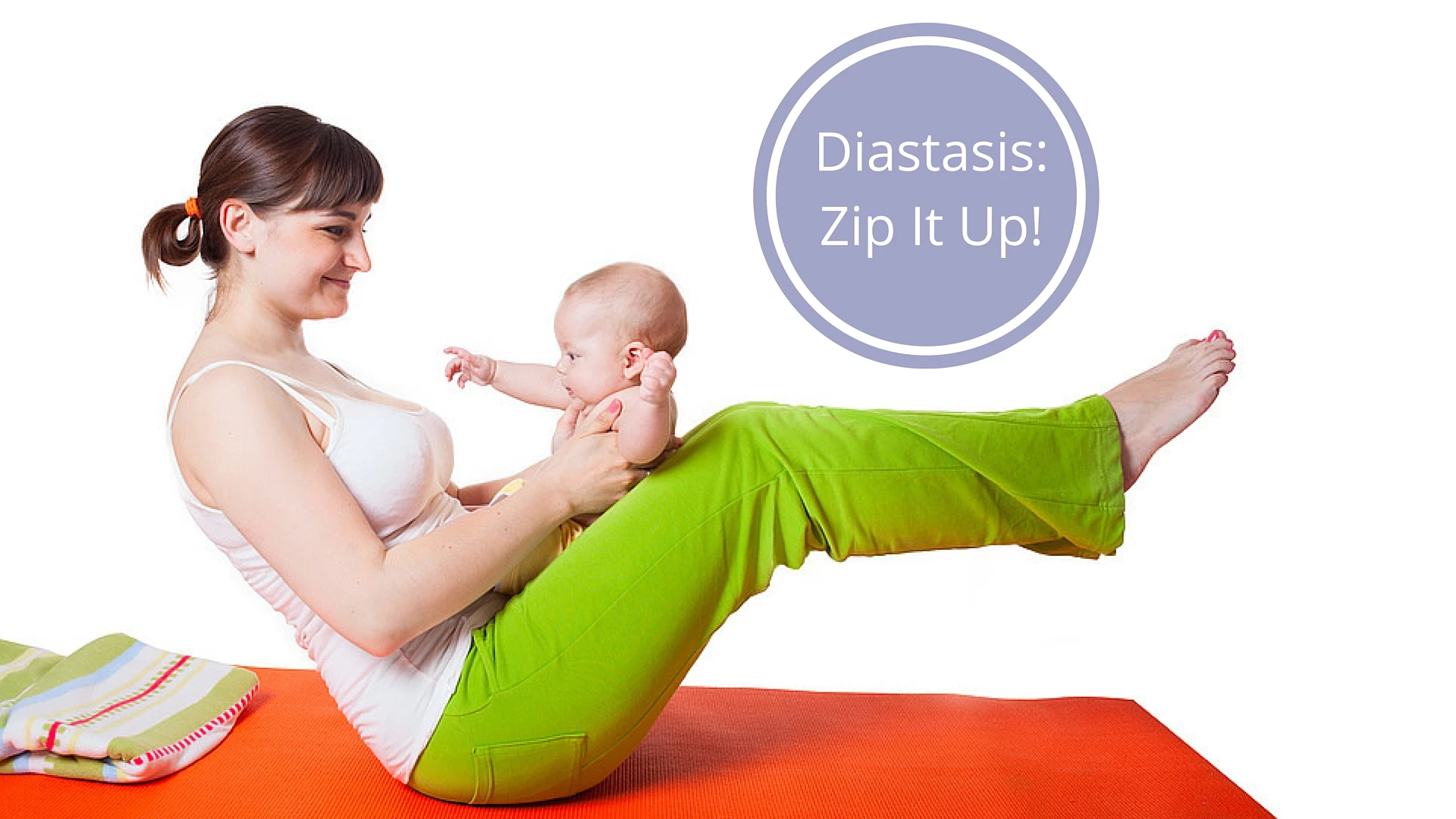Diastasis: Zip It Up!

Diastasis: Close the Gap
Commonly referred to as the “post-partum pooch,” Diastasis—a separation of the abdominal muscles—affects a surprising number of people: research indicates that up to two thirds of pregnant women develop it. And it’s not just a “post-partum” pooch; men can develop it too (often from weightlifting), as can children. Dealing with the separated abdominals of diastasis is frustrating. Lower back pain, mild incontinence, and constipation all commonly result from the condition. Yoga and other exercises can help, but certain precautions should be taken. In this article, physical therapist Julie Wiebe gives some key tips for practicing yoga for diastasis.
I like to think of a diastasis that has resisted closure like an open zipper. An open fly affects more that just the zipper, it strains the button above, it messes with the fit of the pants, exposes things not supposed to be exposed, etc. Addressing your zipper may need a multi-tiered approach to re-zip: shimmying up your pants, lying on the bed for a reclined, gravity-assisted assault, jumping up and down, etc.
A multi-tiered approach to a diastasis is also necessary to zip it up! It is important to understand that an opening in the abdomen impacts more than just the abdomen. The diastasis affects and is affected by breathing mechanics, continence, alignment, central stability, movement control, fitness, etc. So just doing specific abdominal exercises or wearing a brace on your abdomen will be hard pressed to close the gap or address those other systems.
Here are a few tips to think integratively when addressing your diastasis:
1. What you do with the abdomen in a short, prescribed exercise session a few times a day cannot beat 16-18 hours a day of standing, sitting and moving in lousy alignment that separates the midline all day. If your alignment keeps your fly open all day, then all your movements and daily exertions, like lifting little ones, will reinforce keeping it open (demo below). Same goes for fitness. The alignment you do fitness in is critical to approximating the abdomen and connective tissue to encourage closure. Fitness can support closure if you are challenging your abdomen with the fly closed. If a challenge comes on an open fly, it will not only reinforce the gap, but could make it worse. Speaking of exercise alignment …
2. Many post surgical and diastasis rehab program websites show before and after pics. Bellies get zipped and definitely look flatter, but so do the bums. Ladies, do not sacrifice your arse for your abdomen. Your bum is a really important counterbalance for your abdomen. (And a great friend to your pelvic floor.) To promote a closed fly, it is important to train them together, not with separate abdominal or glute work. One of the key ways to do this is be conscious of your alignment while exercising. It’s not just the pelvic position we need to be aware of, though it should be untucked to optimize the glutes. But rib cage position is key! Your rib cage should live over the pelvis to help balance the forces, pressures, and appropriate recruitment of the front (abs), back (glutes), top (diaphragm) and bottom (pelvic floor). Check out this clip below for some tips on optimum alignment to keep your fly closed.
3. I encourage my ladies to challenge the abdomen on exhale ONLY as they begin their programs. Exhale is the position of closure of the abdomen, or it should be. The abdomen comes together and moves in on exhale: a closed fly. This is a great position for a challenge or load!! By contrast, on inhale the abdomen should open or give to allow for the breath in. Please don’t challenge your abdomen then! Also, please don’t hold your breath on any exertion. This added pressure from the inside opens your fly and then the added load of the exertion will further separate the opening.
4. I teach my ladies to “blow before you go.” This cue is meant to encourage them to start the exhalation before the exertion begins. This engages the deep stabilizer muscles (pelvic floor and transverse abdominus muscles), (see a clip below), approximates the abdomen, all before the exertion begins. Your center is prepared for loading, and the diastasis is protected. Continuing the exhalation throughout the exertion will help to maintain diastasis closure throughout the activity.
5. Always check your fly during and after exercise to be sure closure has been maintained or improved as you do you work. If your fly is more open, re-assess your program and form or get help!
Another great pelvic floor article from YogaUOnline and Julie Wiebe PT: Intra-Abdominal Pressure: Pelvic Health Friend or Foe?
Study Pelvic Floor Health with YogaUOnline and Leslie Howard: Yoga For Pelvic Floor Balance – Strengthen the Female Pelvic Floor.
Printed with Permission from Juliewiebept.com
 Julie Wiebe is a physical therapist who specializes in returning women to fitness after injury and pregnancy. She advocates for the awareness of pelvic health issues in fitness and promotes innovative solutions for women through her blog, videos and social media (follow her @JulieWiebePT and/or Facebook.com/JulieWiebePT) . She shares her evidence-based, integrative approach internationally with both professionals and women through live, online, and DVD educational programs. Find out more and connect with Julie at www.juliewiebept.com
Julie Wiebe is a physical therapist who specializes in returning women to fitness after injury and pregnancy. She advocates for the awareness of pelvic health issues in fitness and promotes innovative solutions for women through her blog, videos and social media (follow her @JulieWiebePT and/or Facebook.com/JulieWiebePT) . She shares her evidence-based, integrative approach internationally with both professionals and women through live, online, and DVD educational programs. Find out more and connect with Julie at www.juliewiebept.com



